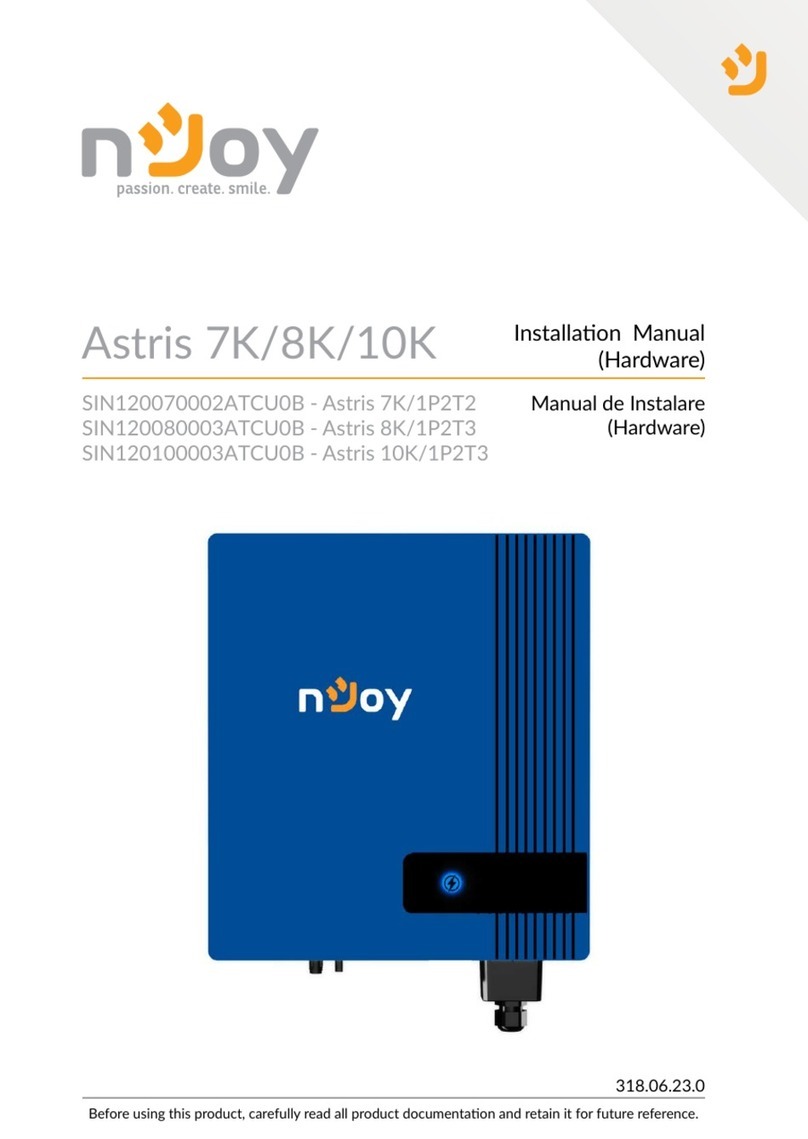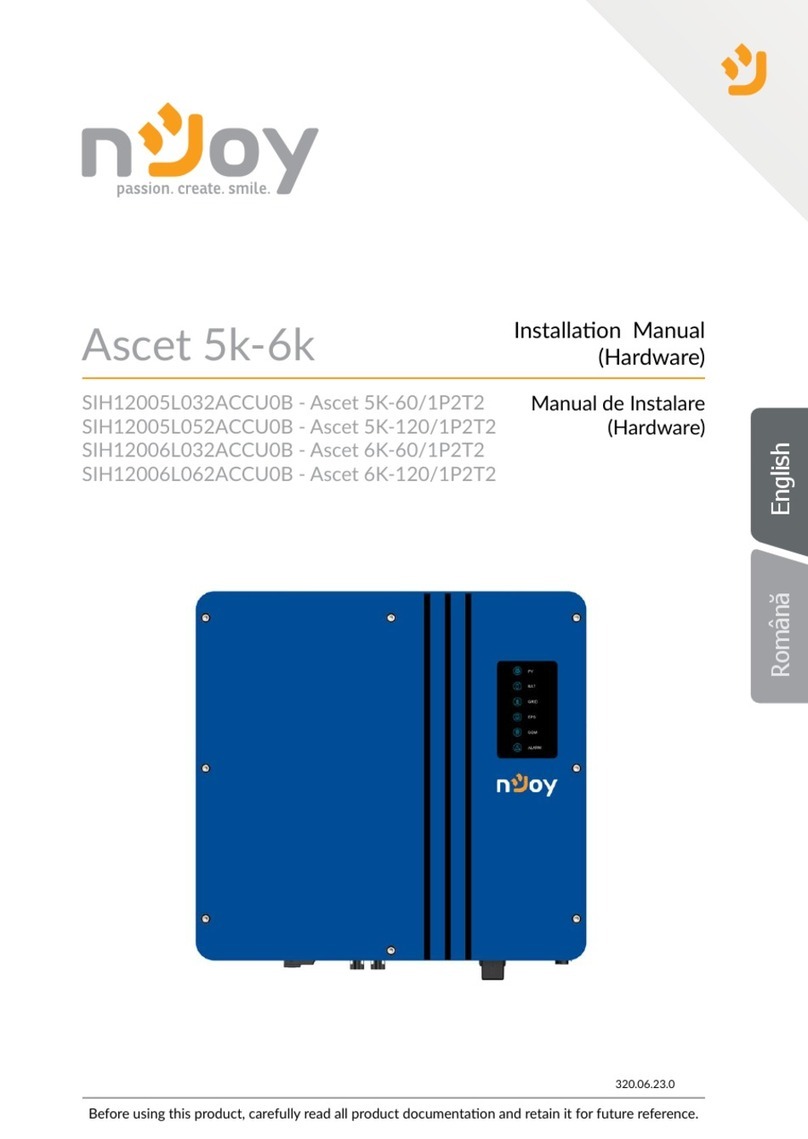
2
English
Română
SymbolConvenons
Safety symbols used in this manual, which highlight potenal safety risks
and important safety informaon, are listed as follows:
Symbol Description
DANGER Indicates an imminently hazardous situaon which, if not
correctly followed, will result in serious injury or death.
WARNING Indicates a potenally hazardous situaon which, if not
correctly followed, could result in serious injury or death.
CAUTION Indicates a potenally hazardous situaon which, if not
correctly followed, could result in moderate or minor injury.
NOTICE Indicates a potenally hazardous situaon which, if not correctly
followed, could result in equipment failure, or property damage.
NOTE
Calls aenon to important informaon, best pracces and
ps: supplement addional safety instrucons for your beer
use of the PV inverter to reduce the waste of your resource.
REFER Refer to documentaon (Remind operators to refer to the
documentaon shipped with the inverter).
Safety
1
Before beginning your journey, please read these safety precauons in
User Manual carefully.
1.1 Personnel Safety
a. The PV inverter must be installed, electronically connected, operated
and maintained through specially trained technician;
b. The qualied technician must be familiar with the safety regulaons of
electrical system working process of PV power generaon system, and
standards of local power grid;
c. The technician must read through this User Manual carefully and master
it before any operaon.
























